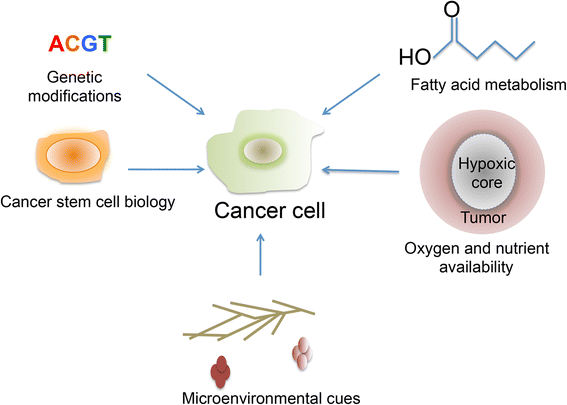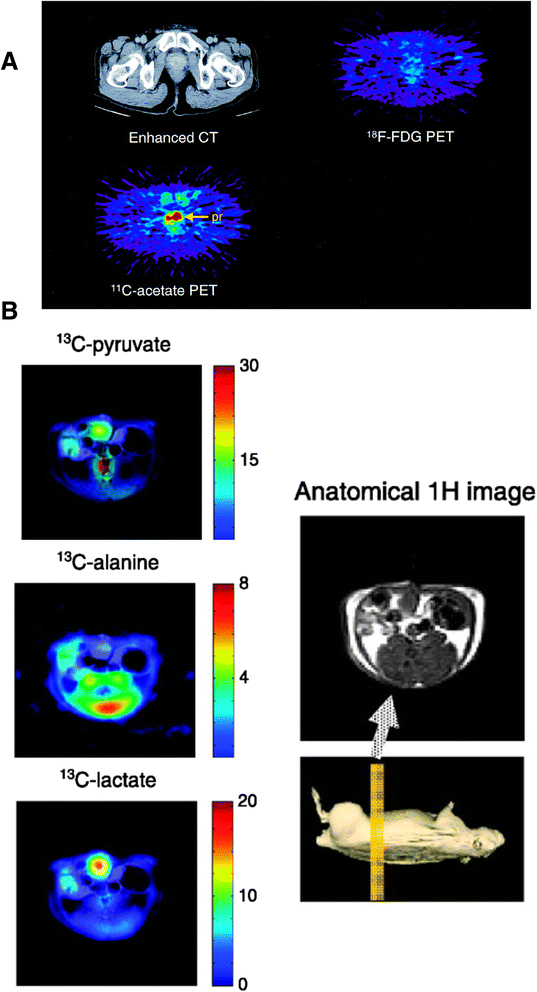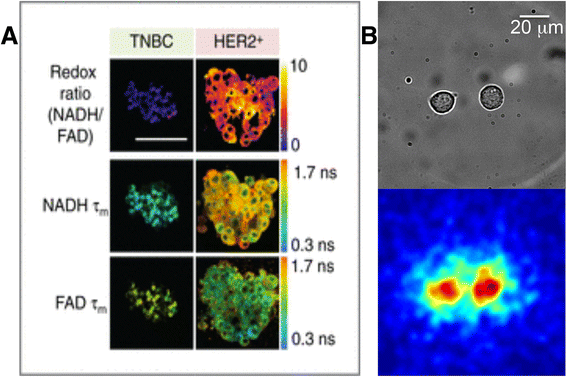Imaging metabolic heterogeneity in cancer
- PMID: 26739333
- PMCID: PMC4704434
- DOI: 10.1186/s12943-015-0481-3
Imaging metabolic heterogeneity in cancer
Abstract
As our knowledge of cancer metabolism has increased, it has become apparent that cancer metabolic processes are extremely heterogeneous. The reasons behind this heterogeneity include genetic diversity, the existence of multiple and redundant metabolic pathways, altered microenvironmental conditions, and so on. As a result, methods in the clinic and beyond have been developed in order to image and study tumor metabolism in the in vivo and in vitro regimes. Both regimes provide unique advantages and challenges, and may be used to provide a picture of tumor metabolic heterogeneity that is spatially and temporally comprehensive. Taken together, these methods may hold the key to appropriate cancer diagnoses and treatments in the future.
Figures



References
Publication types
MeSH terms
Grants and funding
LinkOut - more resources
Full Text Sources
Other Literature Sources
Medical
Research Materials

